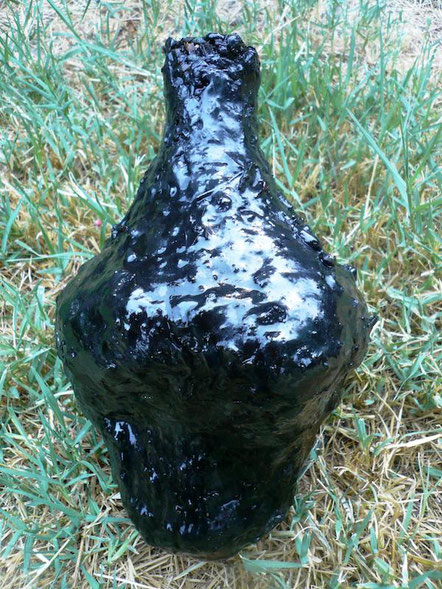
Remember when we all had to throwaway our water bottles because scientists discovered the plastic containers were full of BPA, a chemical that was going to deform our babies and give us cancer? Well it turns out that Chumash Indians living in the Santa Barbara Channel region may have had a similar problem way back in the late Holocene.
According to a research team led by the Smithsonian’s Dr. Sabrina Shotls, skeletal remains from archaeological sites show Chumash heath declined over time. Archaeological evidence also shows the Chumash were likely exposed to polycyclic aromatic hydrocarobons (PAHs) through consistent use of naturally occurring bitumen. Chumash used bitumen to make watertight bottles and canoes, to fix projectile points, and to make chewing gum and various other products.
Shotls’ team hypothesized the resulting PAH exposure was responsible for Chumash health decline because PAH is known to cause cancer, nutritional deficiencies, organ damage, altered hormone levels, and possibly even neurodegeneration. To test their hypothesis, the group constructed water bottles using the same techniques and materials as the Chumash.
As the team melted the bitumen that would be used to coat the bottles, they measured PAH levels in the fumes created by the heated bitumen. After bottle making was complete, they filled a bottle with distilled water, let it sit for two months, then tested PAH levels in the water. After the water test, they filled the bottle with olive oil to mimic fatty foods the Chumash would have stored and tested PAH levels in the oil.
Results of the testing showed negligible PAH levels in the water, dangerous levels in the oil, and levels slightly higher than those found in cigarette smoke in the bitumen fumes. Shotls and her team say their findings suggest prolonged PAH exposure among the Chumash, even in “sub-lethal” levels could have contributed to the overall worsening of Chumash health.
Results of the group’s study were published in Environmental Health. The full text of their article can be found here: https://ehjournal.biomedcentral.com/articles/10.1186/s12940-017-0261-1



